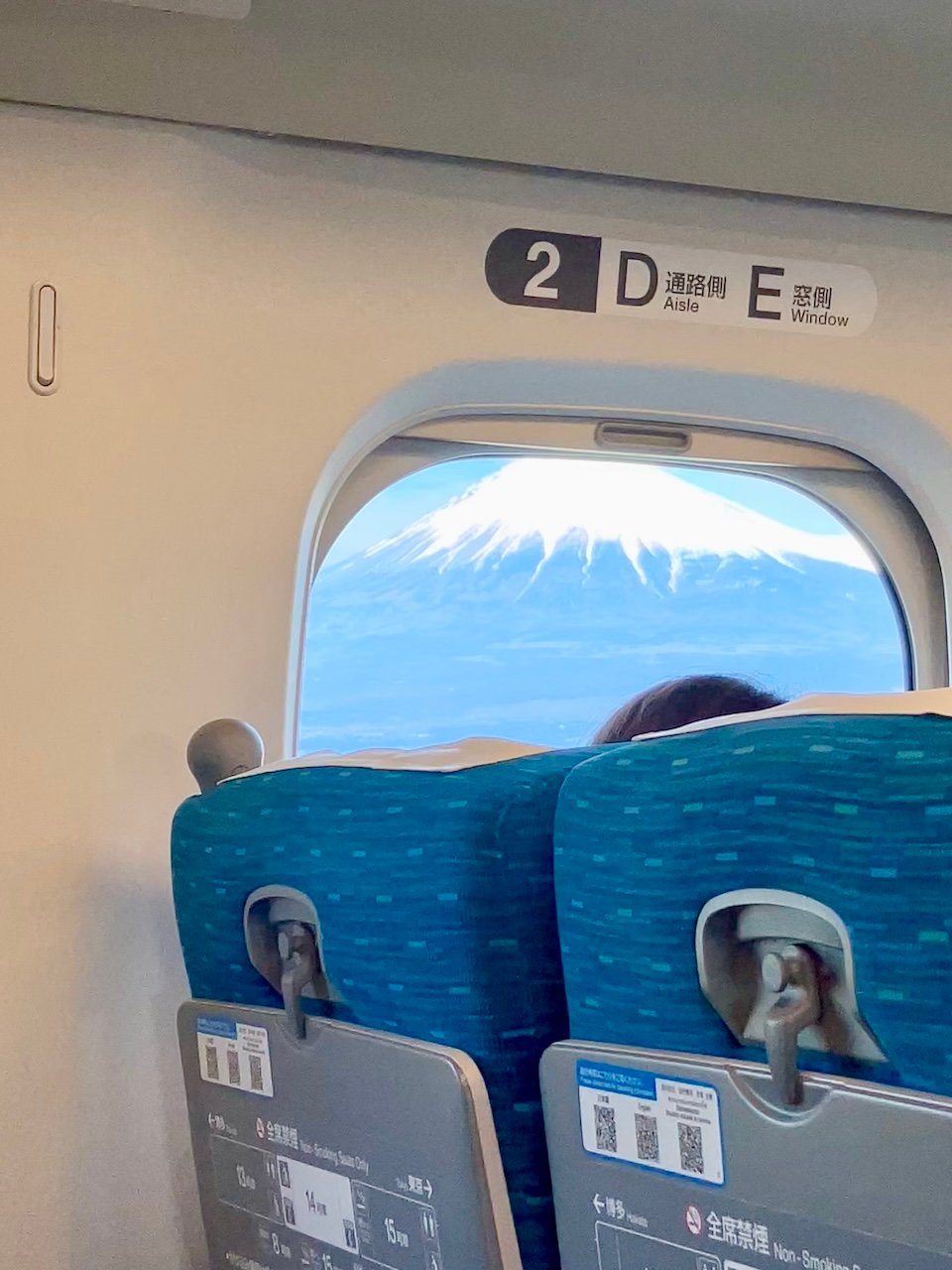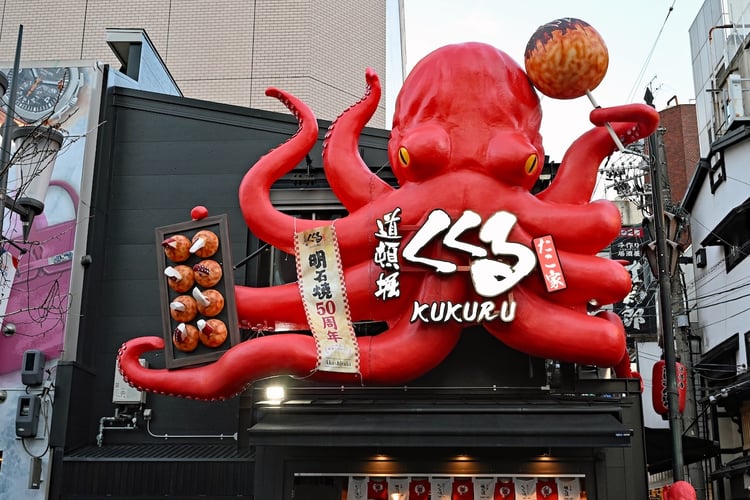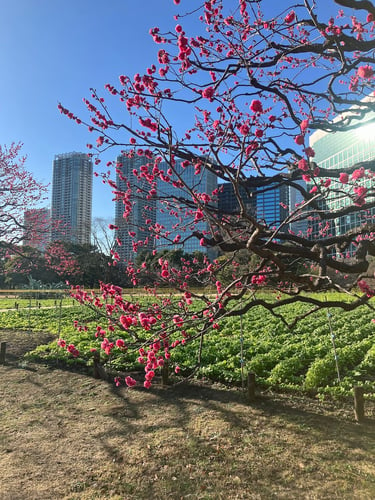
Japan Travel Guide: The Land of the Rising Sun
Step into the world of Japan! All you need for planning your dream trip to Japan is right here. From important Japan travel tips, to a sample itinerary, and suggested destinations within Japan - Jetset Seeker has you covered!
Welcome to our Comprehensive Japan Travel Guide
Welcome to our Japan travel guide, your ultimate resource for exploring the Land of the Rising Sun! In this comprehensive Japan travel guide, we'll take you on a journey through the vibrant cities, tranquil temples, and breathtaking landscapes that define this fascinating country. Whether you're a first-time visitor or a seasoned traveler, our Japan travel guide has everything you need to plan an unforgettable adventure. So, pack your bags and get ready to immerse yourself in the rich culture and timeless beauty of Japan with our Japan travel guide!
Japan Travel Guide: The Lowdown
- When to Visit
- Money
- Language
- Shopping
- Airports
- Trains
- Public Transportation
- Etiquette
- Additional Information
Japan Travel Guide: When to Visit
Curious about the optimal time to visit Japan? Truthfully, anytime is ideal! Below are our insights on what each season has in store for your unforgettable journey.
Winter: Skiing & Lunar New Year
Visiting Japan during the winter offers a unique and diverse experience. The winter months provide excellent opportunities for skiing and snowboarding in some of Japan's renowned ski resorts in Hokkaido and Nagano. The powdery snow and well-maintained slopes attract winter sports enthusiasts from around the world.
Winter in Japan also coincides with the celebration of the Lunar New Year, known as "Shogatsu" in Japanese. This festive occasion brings colorful decorations, traditional performances, and special events across the country, especially in areas with large Chinese and Korean communities like Yokohama and Kobe.
Tokyo, Kyoto, and Osaka all boast mild winters, with temperatures typically above freezing and minimal snowfall, making them ideal destinations for travelers seeking comfortable city exploration during the winter months.
One notable advantage of visiting Japan during the winter is the smaller crowds. Compared to the peak tourism seasons of spring and autumn, the winter months typically see fewer visitors, allowing for a more relaxed and intimate exploration of popular attractions and landmarks. Plus, accommodations and transportation options may be more readily available and affordable during this time.
Spring: Cherry Blossoms
Visiting Japan in springtime, particularly during cherry blossom season (end of March/beginning of April), is a breathtaking experience. The iconic cherry blossoms, or "sakura," blanket the country in delicate pink and white hues, creating stunning landscapes and picturesque scenes in parks, gardens, and along riverbanks.
However, it's essential to note that springtime in Japan is also peak tourist season due to the cherry blossoms, leading to significant crowds at popular viewing spots and attractions. Advance planning and booking accommodations well in advance are crucial to ensure a smooth and enjoyable trip during this bustling time.
Summer: Festivals
Visiting Japan in summertime offers a mix of vibrant festivals and warm weather. One of the most notable events is the Gion Matsuri in Kyoto, a month-long festival featuring colorful parades and traditional performances. Other popular summer festivals include the Tanabata Festival in Sendai and the Awa Odori in Tokushima.
Summertime in Japan is characterized by hot and humid weather, with temperatures ranging from around 77°F to 95°F (25°C to 35°C) in most regions. It's important to note that summertime in Japan also coincides with the rainy season, known as "tsuyu" or "baiu," which typically occurs from June to July. This can bring heavy rainfall and occasional typhoons, so it's advisable to check the weather forecast and plan accordingly.
Despite the weather, summertime attracts crowds of visitors, especially during popular festivals. Advance booking of accommodations and transportation is recommended to avoid any inconvenience.
One unique aspect of visiting Japan in summer is the opportunity to hike Mt. Fuji, Japan's tallest peak. The official climbing season for Mt. Fuji is from early July to early September, making summertime the only time of year when visitors can ascend the iconic mountain and witness breathtaking views from the summit.
Fall: Autumn Foliage
Visiting Japan in autumn offers a stunning display of vibrant colors as the leaves change, known as "koyo" in Japanese. The autumn foliage typically peaks from late October to early December, depending on the region and elevation, creating breathtaking landscapes of red, orange, and gold hues.
Autumn is also a time for various cultural events and festivals, such as the Takayama Autumn Festival and the Kurama Fire Festival near Kyoto, which attract visitors from around the world.
Crowds during autumn in Japan tend to be more manageable compared to spring, especially outside of major tourist hotspots. However, popular viewing spots for autumn foliage can still get crowded, particularly during weekends and peak foliage season.
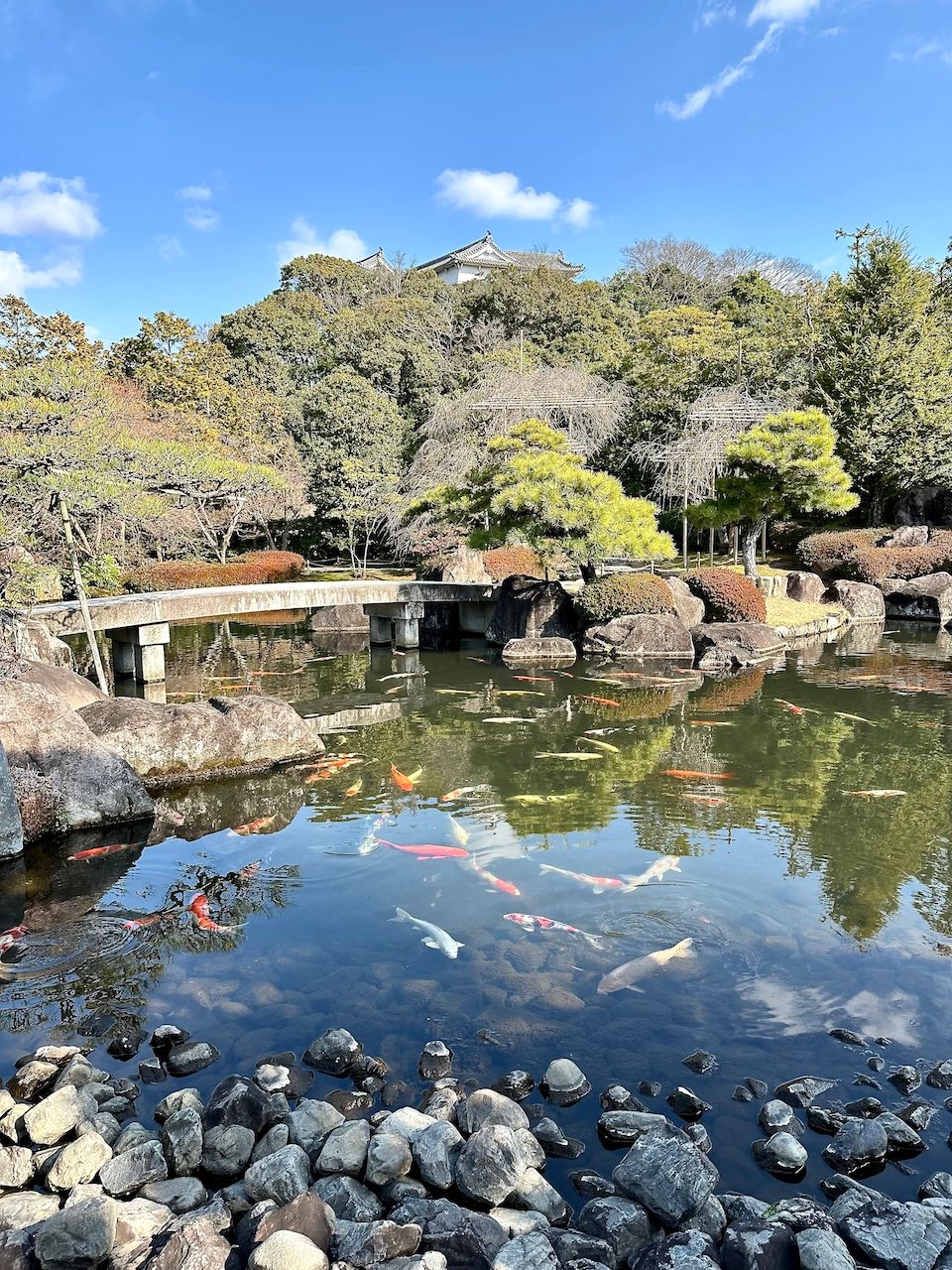
Japan Travel Guide: Money
Wondering about currency and money matters in Japan? Don't fret! Our guide has got you covered with all the essential information to navigate transactions smoothly during your travels.
Currency
Japan's currency is the yen, abbreviated as JPY, and it is denoted by the symbol ¥.
Japanese yen comes in both coins and bills. The smallest denomination is the ¥1 coin, followed by ¥5, ¥10, ¥50, ¥100, and ¥500 coins. For bills, denominations include ¥1,000, ¥2,000 (although these are rare), ¥5,000, and ¥10,000. Among these, ¥1,000 and ¥10,000 notes are the most commonly dispensed from ATMs.
During our trip to Japan, the exchange rate was 1 Japanese yen (¥) to $0.0068 USD. For the latest currency conversions, it's advisable to consult Google for real-time rates.
Cash is King
Despite Japan's reputation as a technologically advanced nation, cash remains the preferred method of payment, which may come as a surprise. Even in this digital age, many small shops, restaurants, and even some popular tourist sites continue to operate on a cash-only basis. While credit and debit cards are becoming more widely accepted, especially in larger establishments and urban areas, it's advisable for travelers to ensure they have cash on hand.
ATMs
Foreign debit cards may not be accepted at all ATMs or banks in Japan for cash withdrawals. In our experience, we relied exclusively on 7-Eleven Bank ATMs without encountering any issues. These ATMs were conveniently located throughout our travels, and the associated fees for using them were minimal.
Other travelers have had success using their foreign-issued debit cards at the ATMs inside FamilyMart and Lawson convenience stores, as well as ATMs inside post offices throughout Japan.
Credit Cards
Although credit cards are not universally accepted in Japan, we observed a diverse range of accepted cards including American Express, Visa, Mastercard, and Discover Card where they were welcomed.
IC Cards
IC cards, such as Suica, Pasmo, and ICOCA, are widely used in Japan for convenient and cashless payments, primarily on public transportation systems like trains, buses, and subways. However, these cards have also expanded their utility beyond transit and are accepted at various convenience stores, vending machines, select restaurants, and even some taxis.
IC cards function on a prepaid basis, allowing users to load funds onto the card and then simply tap it on a reader to make a payment. They are particularly convenient for travelers as they eliminate the need to carry exact change for transportation fares and small purchases.
For those traveling to Japan and relying on public transportation, having an IC card is essential. If you own an iPhone, you can easily download Suica, Pasmo, and ICOCA cards onto your device for convenient tap-to-pay functionality. This not only streamlines your payment process but also simplifies the reloading of funds onto your cards. Additional information about IC cards and adding your IC card to your iPhone can be found in the link below.
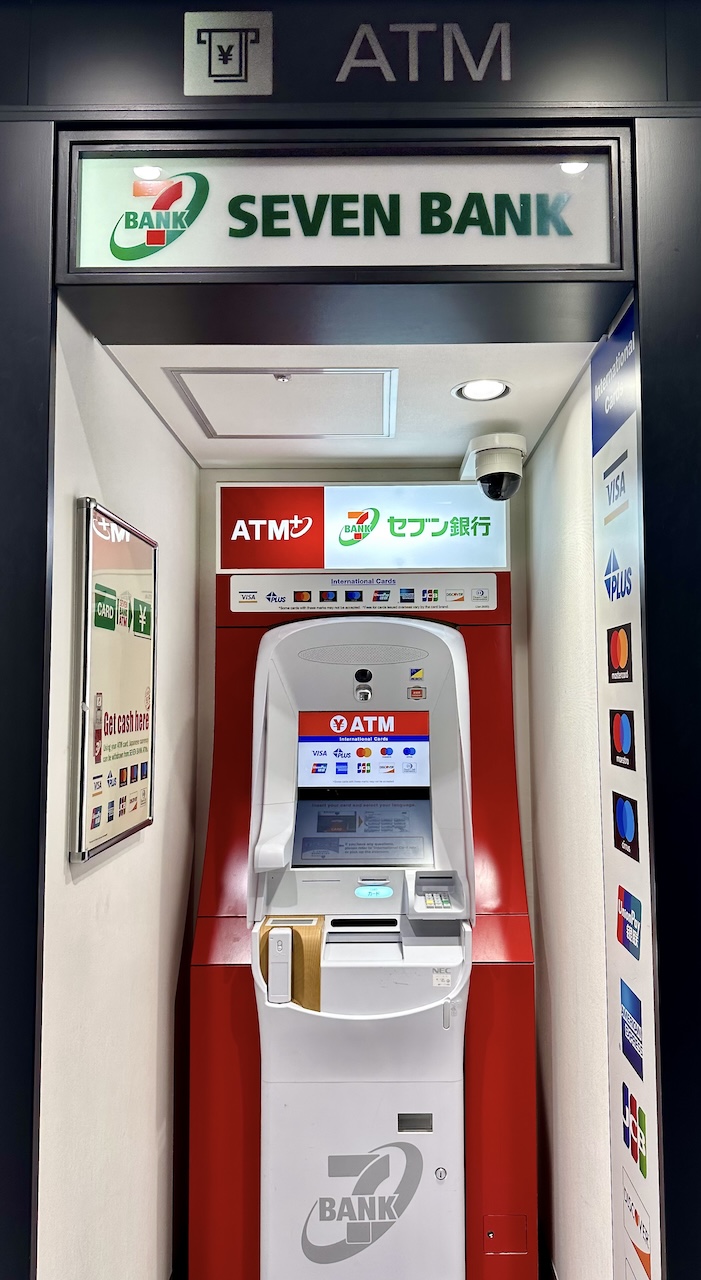
Japan Travel Guide: Language
Learning a few key words in the native language of the country you are visiting before your trip is always a meaningful gesture of respect for the people and country you are visiting. This is especially important in Japan, where English is not widely spoken. By making the effort to communicate in the local language, you demonstrate your appreciation for the culture and enhance your travel experience. To help you on your journey, here is a list of key words and phrases you should familiarize yourself with before traveling to Japan.
Japanese Key Words & Phrases
Konnichiwa (kon-nee-chee-wah) - Hello
Arigatou Gozaimasu (ah-ree-gah-toh goh-zah-ee-mahs) - Thank You (Formal)
Arigatou (ah-ree-gah-toh) - Thank You (Informal)
Sumimasen (sui-ma-sen) - I'm Sorry / Excuse Me
Kudasai (koo-duh-sigh) - Please
Hai (hi) - Yes
Īe (eee-eh) - No
Kore (ko-ray) - This
Oishii (oh-ee-shee) - Delicious
Translation Apps
While traveling throughout Japan, you'll find that many locals have limited proficiency in English. While signage is commonly bilingual, navigating Japanese menus or other texts may require translation assistance. During our travels, we found Google Translate, particularly its Google Lens feature within the app, to be invaluable. This tool facilitated seamless communication and comprehension. You can even pre-download the app and the Japanese language pack for offline use, ensuring access even without WiFi or cellular data.
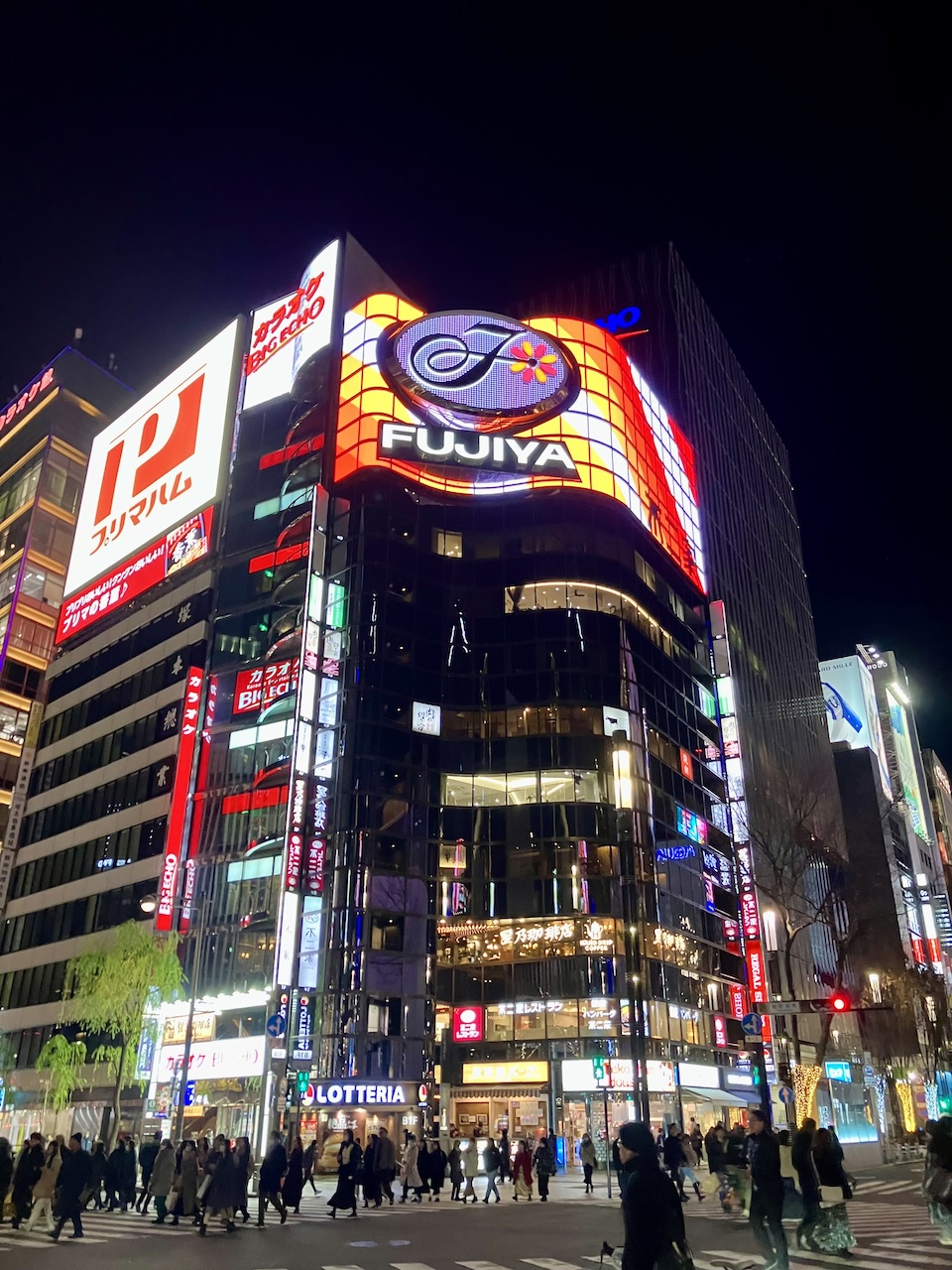
Japan Travel Guide: Shopping
Shopping in Japan offers a blend of traditional craftsmanship and modern convenience. From browsing bustling street markets for unique souvenirs to exploring the convenience of konbini (convenience stores) and taking advantage of tax-free shopping, Japan offers an array of shopping experiences for every taste and preference.
Vintage Stores:
Japan boasts a thriving vintage store scene, especially in cities like Tokyo and Osaka. Most vintage shops in Japan sell a curated selection of secondhand fashion and unique finds, creating a haven for fashion enthusiasts seeking one-of-a-kind pieces. The number of vintage shops is endless and you can find everything ranging from vintage silk kimono to designer handbags, watches, and American clothing brands (think, Nike, Polo Ralph Lauren, and more).
Convenience Stores:
Convenience stores, known as "konbini" in Japanese, are an integral part of daily life in Japan, offering a wide range of services and products.
- Popular convenience stores in Japan include 7-Eleven, Lawson, and FamilyMart. Most, but not all, operate 24 hours a day, seven days a week.
- Konbinis offer a diverse range of products, including snacks, ready-to-eat meals, beverages, toiletries, stationery, and even clothing essentials.
Guide to Japanese Convenience Stores >
Don Quijote:
Don Quijote, commonly known as "Donki," is a popular 24-hour discount store chain in Japan, recognized for its diverse product range, competitive pricing, and unique shopping experience. Offering everything from groceries and cosmetics to electronics and quirky items, the stores are bustling with activity and boast a distinctive atmosphere. Don Quijote also provides tax-free shopping for tourists.
Tax-Free Shopping:
Tax-free shopping for tourists in Japan is a program designed to provide international visitors with a tax exemption on their purchases. Many retailers, especially in popular tourist areas, participate in this initiative. To qualify for tax-free shopping, tourists need to present their passport (it cannot be a copy of your passport) and make a minimum purchase amount of ¥5,000 in a single transaction (there is a maximum of ¥500,000 on consumables, i.e. foods and cosmetics, for the purchase to qualify). Participating stores display a "Tax-Free" logo, and the tax refund is processed at dedicated counters within the store.
Please note that items purchased tax-free must be taken out of Japan with you. You cannot qualify for tax-free purchases if you intend to use or consume the items while still in Japan.
Prior to your departure from Japan, you will need to scan your passport in customs if you purchased any tax-free items during your visit. The process is quick and straightforward, taking only a minute. Follow the signs for Japan Tax Free at the airport or seaport that you are departing from and a customs agent will be there to assist you.
Popular Souvenirs:
In the expansive and diverse country of Japan, the array of available souvenirs is vast. While this list is not exhaustive, it encompasses some of the items we purchased, along with other popular choices.
- Japanese Snacks & Sweets: Items like Kit Kats with local flavors, traditional Japanese sweets (wagashi), and savory snacks make for delicious souvenirs.
- Sake & Japanese Whiskey: Popular sake souvenirs from Japan include brands like Dassai and Suzune, while sought-after Japanese whiskies include Yamazaki, Nikka, and Hibiki.
- Matcha Green Tea Products: Matcha powder, as well as matcha-flavored treats, including matcha-flavored Kit Kats, cookies, and traditional tea sets, are popular choices for those who appreciate Japanese green tea.
- Chopsticks and Tableware: Elegant and traditional chopsticks, as well as unique tableware like sushi plates and bowls, are practical souvenirs.
- Japanese Knives: Japanese knives, renowned for their exceptional craftsmanship and precision, make excellent souvenirs, offering a unique blend of traditional techniques and modern design that elevates their functionality and aesthetic appeal. Japanese knives can vary widely in price, ranging from affordable options to high-end, expensive blades. While there are budget-friendly choices, particularly for everyday kitchen use, renowned brands and artisanal craftsmanship can contribute to higher prices for premium Japanese knives.
- Japanese Ceramics: Japan is home to various pottery shops, and ceramics featuring traditional Japanese designs make for beautiful and meaningful gifts.
- Stationary Products: Japanese stationery products make excellent and unique souvenirs, appreciated for their quality and aesthetic appeal. Examples include traditional washi paper, beautifully crafted fountain pens, character-themed notebooks and planners, and cute and functional stationery items from popular brands like Muji and Midori.
- Lucky Charms: The Maneki-Neko (lucky cat) is one of the most popular Japanese figurines believed to bring good luck and fortune. The Maneki-Neko is available in various sizes and styles. Other lucky charms also make phenomenal souvenirs, like the Daruma dolls symbolizing perseverance and good luck, and Omamori (amulets) from shrines with specific blessings for various aspects of life.
- Traditional Japanese Crafts: Items like calligraphy sets, traditional dolls (ningyo), and handcrafted items from local artisans showcase Japan's rich cultural heritage.
- Gachapon Toys: These small toys from vending machines are a fun and inexpensive souvenir option, with a wide range of quirky and cute characters to choose from.
- Otaku-Related Merchandise: Popular anime or manga souvenirs from Japan include character-themed merchandise, figurines, keychains, and exclusive collectibles available at specialty anime stores.
-
Yukata or Kimono: While traditional garments like yukata (light cotton kimono) or kimono can be more expensive, they make for an unforgettable and authentic souvenir.
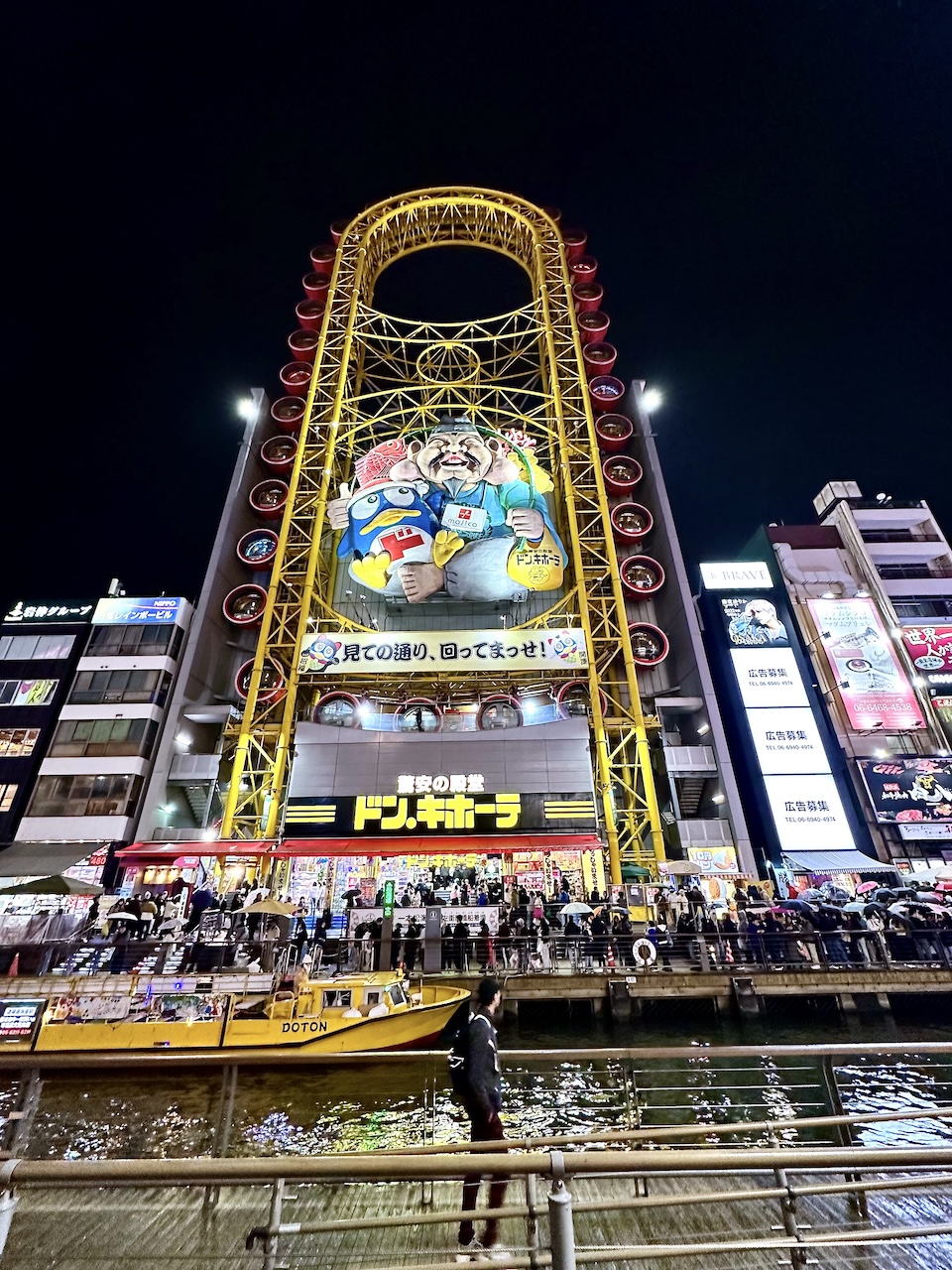
Japan Travel Guide: Airports
Main Airports
Japan has three main, international airports:-
Narita International Airport (NRT) - located near Tokyo, serving as one of the primary gateways to Japan for international travelers.
-
Haneda Airport (HND) - also located in Tokyo, Haneda Airport is another major international hub offering a wide range of domestic and international flights.
-
Kansai International Airport (KIX) - serving the Kansai region, including cities like Osaka, Kyoto, and Kobe, Kansai International Airport is a key international gateway for travelers to western Japan.
Other Airports
Other airports in Japan, popular with tourists, include:
-
Chubu Centrair International Airport (NGO) - services central Japan. It serves as the main gateway to the Chubu region of central Japan, including cities such as Nagoya.
-
New Chitose Airport (CTS) - the main airport serving the city of Sapporo, located on the northern island of Hokkaido. It is the largest airport in Hokkaido and one of the busiest airports in Japan, handling both domestic and international flights.
-
Naha Airport (OKA) - services the island of Okinawa.
- Fukuoka Airport (FUK) - formerly known as the Itazuke Airbase, FUK serves as the main airport for the island of Kyushu.
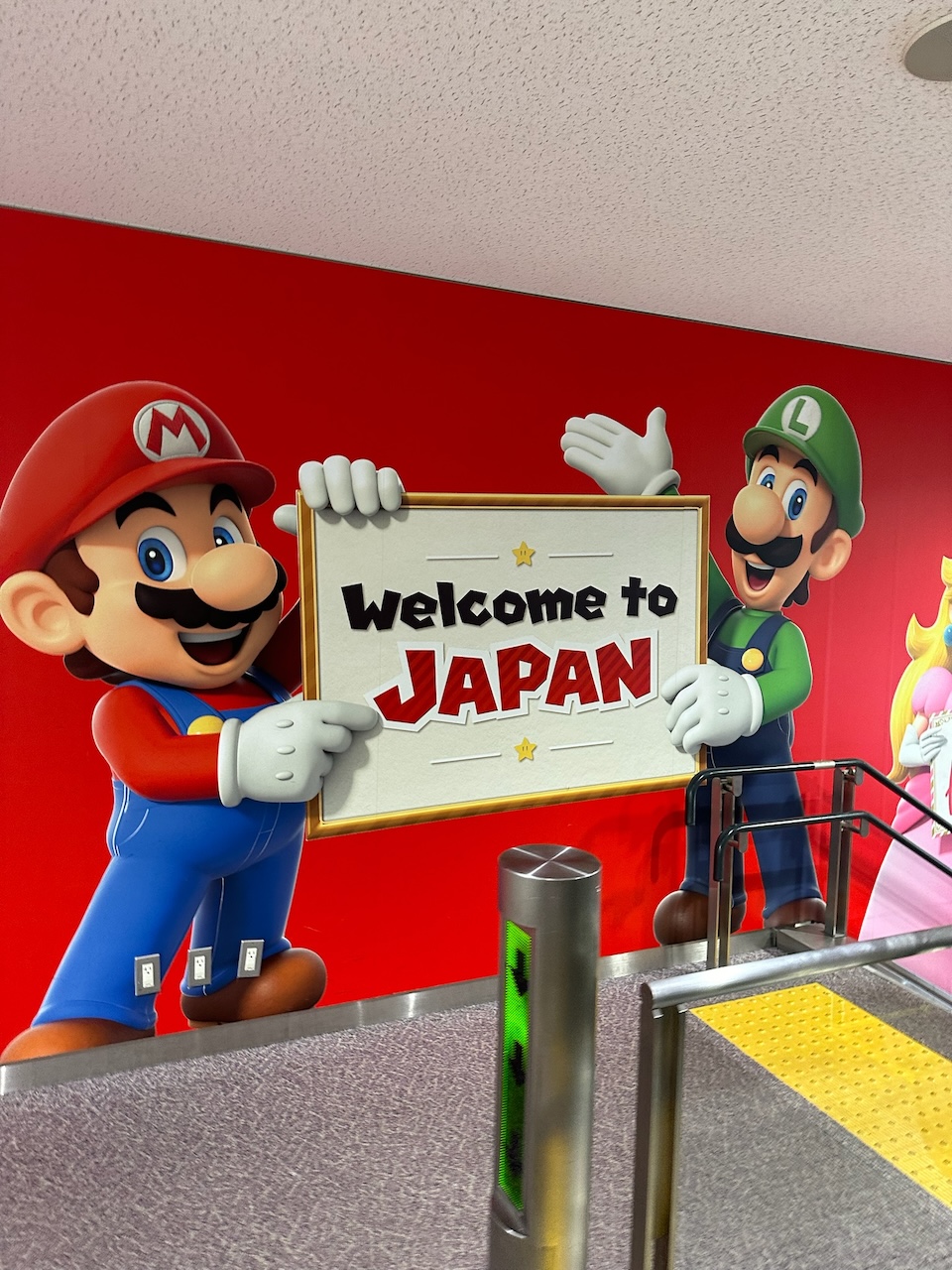
Japan Travel Guide: Trains
JR Rail & Shinkansen (Bullet Train) Overview
Traveling Japan by rail is one of the most efficient and convenient ways to explore the country's diverse landscapes, cities, and attractions. The extensive rail network is well-known for its punctuality, cleanliness, and comfort, making it popular among both domestic and international travelers.
Japan Railways (JR) Group is the largest rail operator in Japan. JR operates both regional and long-distance train services throughout the country. It consists of several regional companies, including JR East, JR West, JR Central, JR Hokkaido, JR Kyushu, and JR Shikoku.
In addition to JR, there are numerous private railway companies operating in different regions of Japan, providing commuter and regional services as well as limited express and tourist trains.
Most trains do not need to be booked in advanced and can be booked just prior to your journey in the kiosks inside the train stations.
The Shinkansen, also known as the "bullet train," is Japan's high-speed railway network operated by JR Group. It connects major cities across the country with trains reaching speeds of up to 200 mph (320 km/h). The Shinkansen is renowned for its safety, comfort, and efficiency, offering travelers a fast and convenient way to travel between cities such as Tokyo, Kyoto, Osaka, Hiroshima, and more.
There are several types of Shinkansen trains, including the Nozomi, the fastest service with the fewest stops; the Hikari, which stops at more stations than the Nozomi; and the Sakura and Kodama, offering services to more destinations with additional stops.
JR Rail Pass
The Japan Rail Pass (JR Pass) is an exclusive ticket for foreign tourists, providing unlimited travel on most Japan Railways (JR) trains, including Shinkansen and local lines, for 7, 14, or 21 consecutive days. The pass must be purchased outside Japan and is available to those with "Temporary Visitor" status. Seat reservations are recommended, and while not mandatory, they are particularly beneficial during peak travel seasons. With various types, including regional passes, the JR Pass is a popular choice for exploring multiple cities and regions, allowing convenient and flexible travel throughout Japan. While personally, we found that the JR Pass did not make financial sense for our trip to Japan, as it was cheaper to buy tickets individually, it may be worthwhile for those planning extensive train travel throughout the country.
JR Rail Pass Information & Pricing >
JR Fare Calculator >
Shinkansen Tickets
The Shinkansen, or bullet train, is Japan's high-speed rail network known for its efficiency and speed. The Shinkansen connects major cities across the country. While advance-purchase Shinkansen tickets are not always necessary, they are recommended, especially during peak travel seasons, holidays, and weekends, to secure preferred departure times and seat reservations. Travelers can purchase Shinkansen tickets at train stations or through online platforms, ensuring a smoother and more convenient travel experience on these iconic trains.
We opted to purchase most of our Shinkansen tickets in advance before departing for Japan, leveraging the convenience of the Tokaido Sanyo Kyushu Shinkansen Online Reservation Service. While not mandatory, this approach allowed us to secure preferred seats with designated oversized luggage space and our desired departure times. Creating an account is necessary before purchasing tickets on the website, and using a credit card with 3DS technology is a requirement. Our Discover card worked smoothly, unlike our Visa cards. According to a helpful article from The Points Guy in March 2023, American Express Platinum cards are also reported to work well for online Shinkansen ticket purchases before your trip to Japan.
If you have large luggage and you are planning on taking it on the Shinkansen, you need to make a reservation in-advance for a seat with oversized luggage storage. Typically, this is the first and last row on trains. These seats do not cost any extra to book and we found that they provided plenty of space for large checked luggage, as well as smaller roll-aboards. More information can be found on the JR website.
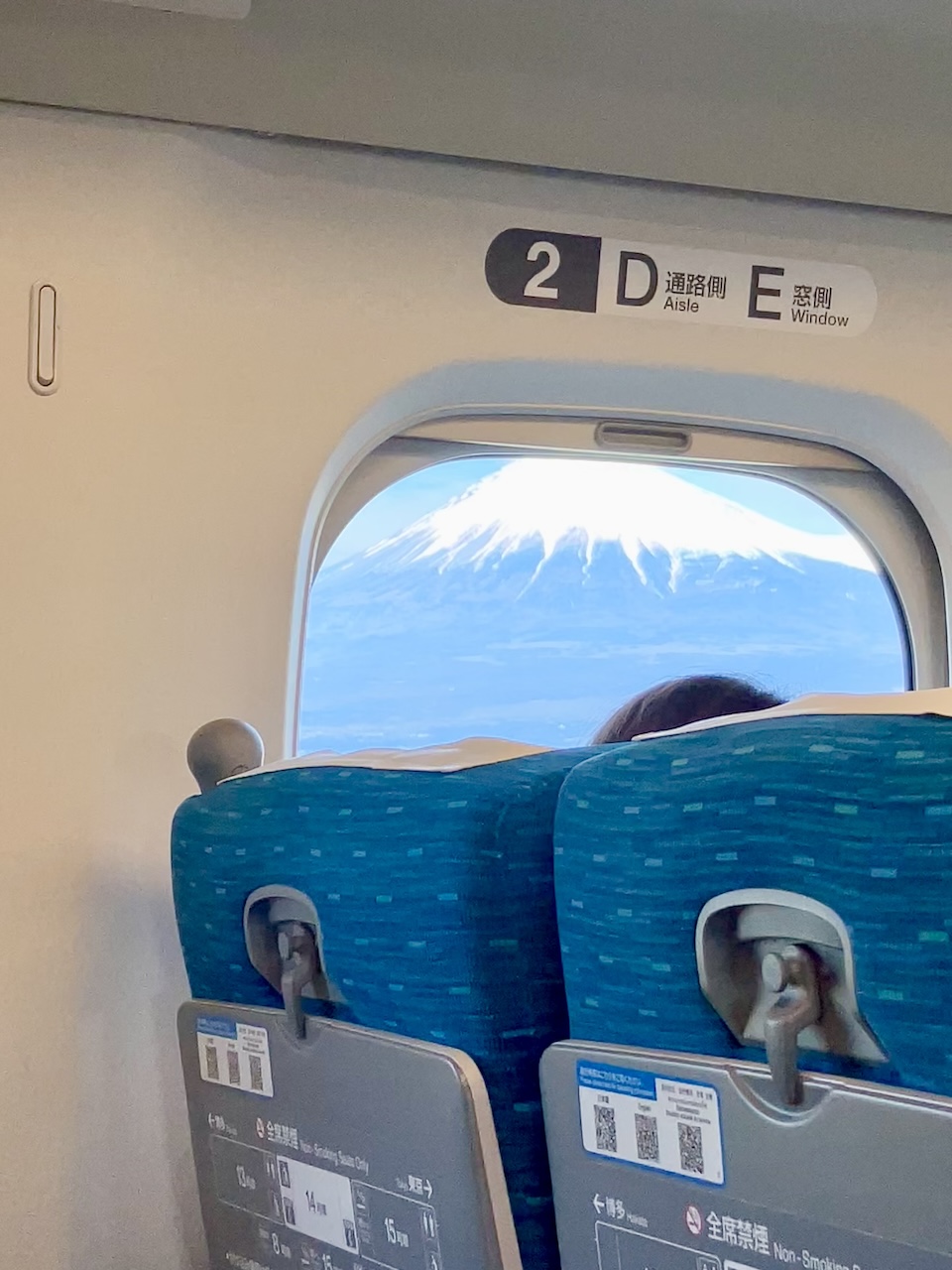
Japan Travel Guide: Public Transportation
Subways & Buses
Subways and buses in Japan are integral components of the public transportation system and are generally easy for tourists to use. Both modes of transport are efficient, reliable, and well-maintained, making them convenient options for getting around cities and exploring tourist attractions.
Subway systems are common in major cities like Tokyo, Osaka, and Kyoto, offering extensive coverage and frequent service to popular destinations. Stations are typically equipped with clear signage, maps, and ticket machines with multilingual options, making it easy for tourists to navigate the system. Subway fares are based on distance traveled and can be paid using tickets purchased from vending machines or by using IC cards, such as Suica or PASMO.
Buses are also widely available in cities and rural areas, providing additional flexibility for reaching destinations not served by subways. While bus routes and schedules may be slightly more challenging for tourists to navigate compared to subways, many buses are equipped with electronic displays and announcements in multiple languages to help passengers identify stops. Payment methods for buses vary by region but often include cash fares or IC card payments.
Utilizing Google Maps for navigation during your travels in Japan is immensely beneficial. The app offers clear guidance on which subway or bus line to take, along with schedules, fares, and other essential information, streamlining your journey and ensuring a smooth travel experience.
Taxis
While taxis in Japan are generally considered safe, reliable, and comfortable, they can be relatively expensive compared to other forms of transportation, especially in large cities like Tokyo.
In our experience using taxis in Kyoto and Osaka, we found the fares to be fair and reasonable for the distances traveled between the train stations and our hotels. However, we encountered limited English proficiency among taxi drivers, with only one in Kyoto able to communicate in English. In other instances, we relied on our hotel staff to arrange taxis and convey our destination, or used Google Translate to facilitate communication.
It is also worth noting that some taxis do accept payment via IC cards.
Uber
Uber is available in Japan, but they are less readily available than traditional taxis and generally come at a higher cost.
Paying for Public Transportation
- Sucia, PASMO, & ICOCA Cards (IC Cards): Suica, PASMO, and ICOCA cards, also called IC cards, are rechargeable smart cards widely used for seamless travel on Japan's public transportation, including trains, subways, buses, and even some taxis. (IC cards are also valid forms of payment at other stores and restaurants within Japan. For a full listing of where IC cards are accepted, check out the JR East website.) Rechargeable at ticket machines, they eliminate the need for individual tickets and are also convenient for small purchases. While physical IC cards are no longer available (with the exception of the PASMO Passport - described below), digital versions can be easily obtained and stored in digital wallets like Apple Wallet. These cards offer a hassle-free way to navigate Japan's bustling transit system, providing efficiency and convenience for both locals and visitors. You can easily reload your digital IC card at ticketing machines using cash or digital payment methods like Mastercard or American Express in your digital wallet (please note, Visa is not accepted when initial purchasing your IC card, but we were able to successfully use Visa to reload the card balance once downloaded on our iPhones), maintaining the seamless convenience of your Japan travel experience.
- Cash: If you don't have a Suica, ICOCA, or PASMO card, you'll need to pay for your rides in cash as credit cards are limited to purchasing transit passes. Fares are determined by the distance to your destination. The ticket machines in the stations will calculate the fare amount for you when you enter your destination.
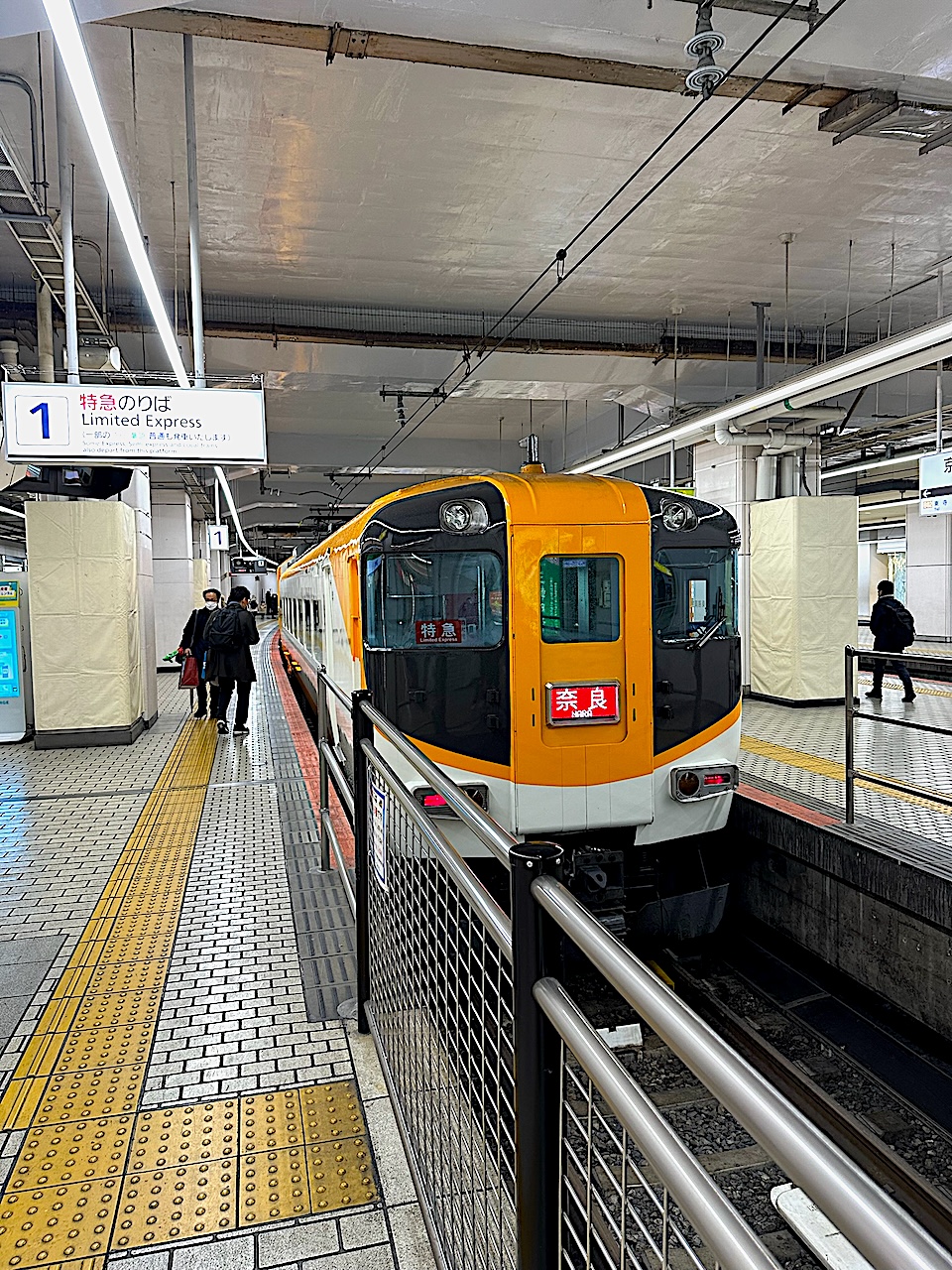
Japan Travel Guide: General Etiquette Guidelines
When visiting Japan, it's essential to be mindful of cultural norms and etiquette to ensure a respectful and enjoyable experience. Here are some general etiquette guidelines for travelers:
-
Avoid blowing your nose in public, as it is considered unsanitary. If necessary, use a tissue and excuse yourself to a private area.
-
Refrain from talking on cell phones in public places, especially on public transit such as trains and buses. Keep your phone on silent mode or vibrate, and if you need to make or take a call, move to the area in-between train cars for phone conversations.
-
When dining in restaurants, wait to be seated rather than seating yourself.
-
Remove your shoes when entering someone's home, traditional ryokan (Japanese inn), or certain other indoor spaces, such as temples and traditional tea houses. Typically, signs will provide indication that shoes should be removed.
-
When visiting temples and shrines, show respect by bowing before entering, refraining from loud conversations, and following any specific rules or rituals observed at each site.
- It is considered rude to not finish your meal at a restaurant or at a home in Japan. Leaving food uneaten can be interpreted as wasteful or disrespectful to the host or chef who prepared the meal.
- Always queue in an orderly manner, whether waiting for public transportation, purchasing tickets, or entering attractions. Cutting in line is considered extremely impolite.
- Public displays of affection (PDA) are considered inappropriate and uncommon in Japanese culture.
- Eating while walking is considered impolite in Japan. In Japanese culture, meals are often viewed as a time for relaxation and enjoyment, and eating on the go can be perceived as rushing or not fully appreciating the food. Eating on trains is also typically forbidden, with the exception of Shinkansen trains.
- Talking loudly on public transit is considered rude in Japan. Japanese society places a strong emphasis on consideration for others and maintaining a peaceful environment, especially in public spaces.
Bowing
Bowing is a fundamental aspect of Japanese culture and serves as a common form of greeting, showing respect, and expressing gratitude. Bowing is a common practice in various social settings in Japan, including convenience stores, shops, restaurants, and hotels. When unsure about the appropriate greeting, a slight nod of the head is generally acceptable when greeting someone in Japan.
In general, the deeper the bow, the greater the respect being shown. A slight nod of the head may suffice in casual situations or when acknowledging acquaintances, while a deeper bow, with the upper body bending forward at the waist, is appropriate for formal occasions or when showing deep respect, such as in business settings or when meeting someone of higher status.
When bowing, it's important to keep the back straight, eyes downcast, and hands at the sides or clasped in front. The duration of the bow typically lasts only a few seconds, and it's customary to return to an upright position before speaking or interacting further.

Japan Travel Guide: Additional Information
Tipping Culture
Tipping is not a part of Japanese culture. In fact, it is often considered to be inappropriate or rude to leave a tip. This is because Japanese hospitality, known as "omotenashi," emphasizes providing excellent service without expecting additional monetary compensation.
In restaurants, hotels, taxis, and other service industries, tipping is generally not expected, and attempting to tip may cause confusion or embarrassment for both the giver and the recipient. Instead of tipping, the best way to show appreciation for good service in Japan is to express gratitude verbally or with a polite bow.
Electrical Outlets & Voltage
In Japan, the standard electrical outlets are Type A and Type B. Type A outlets are the most common and feature two parallel flat pins, while Type B outlets also include a third round grounding pin. The voltage in Japan is typically 100 volts, with a frequency of 50 to 60 Hz. Travelers coming from the United States do not need a plug adapter or converter in order to use Japanese outlets.
Travelers from countries with different plug types, such as Type C (European) or Type G (British), will need a plug adapter to use their devices in Japan. Additionally, devices designed for higher voltages (i.e., 220-240 volts) may require a voltage converter to avoid damage when used in Japan.
Luggage Shipping Service
Yamato Transport's luggage handling service, also known as "Kuroneko" or black cat in Japanese, offers travelers in Japan a convenient way to transport their belongings without the hassle of carrying heavy bags. With options for pickup from various locations, including hotels and airports, travelers can arrange for their luggage to be delivered to any destination within Japan reliably and efficiently. The service provides flexibility with delivery options, including next-day, same-day (in select areas), and delivery to convenience stores or other pickup points. The service is especially beneficial for those traveling with ski gear, golf clubs, or small children.
More information on this service can be found on the Yamato Transport website.
Cellular Data & WiFi
Much to our surprise, public WiFi was not readily available in Japan and only two out of the four hotels we stayed in during our time in Japan had reliable WiFi. Since paying for international data plans can be pricey, we opted for an eSIM from Airalo for our trip. We purchased a 10 GB plan which was valid for 30-days. The eSIM was limited to data only; however, this still allowed us to communicate via WhatsApp, easily get directions, utilize Google Translate, and surf the web.
••••••••••••••••••••••
Get $3 off your first eSIM data pack from Airalo. Use code LAUREN5219 when you sign up or apply it at checkout. Or you can use the following link: https://ref.airalo.com/mk72 (To be fully transparent, when you use our referral code, we also get a $3 credit for Airalo.)
••••••••••••••••••••••
Other popular options for connectivity in Japan include purchasing a physical sim card upon arrival in Japan or renting a pocket WiFi device in Japan. We looked into renting a pocket WiFi device from Japan Rail (they also sell sim cards too), but ultimately decided the eSIM route was better suited for our budget and needs.
Trash & Recycling
Trash
In Japan, you will likely notice a scarcity of public trash cans. This practice stems from the cultural emphasis on personal responsibility and cleanliness. Rather than relying on public trash cans, individuals are expected to carry their waste until they find a suitable place to dispose of it, such as their home or workplace.
Visitors are encouraged to follow suit and carry their trash until they can properly dispose of it to help maintain the cleanliness of public spaces. We suggest keeping a small plastic bag with you to gather your trash for disposal at a later time.
Recycling
Recycling in Japan is taken seriously, with strict guidelines and practices in place to promote sustainability and environmental responsibility. Visitors dining at fast food restaurants in Japan can expect to encounter a system of sorting and disposing of their waste, including recyclables such as plastic bottles, cans, and paper products. While it may vary depending on the establishment, it's common for fast food restaurants to provide separate bins or containers for different types of waste, such as burnable garbage, recyclables, and non-burnable items. Visitors are generally expected to sort their waste accordingly before disposing of it, following the instructions provided at the restaurant.
Public Bathrooms
The public bathrooms in Japan were some of the cleanest we've ever encountered on our travels - and they are free to use. The bathrooms in subway stations and parks are also usually spotless. However, do not be alarmed to see a lack of soap or a place to dry your hands (i.e., no hand dryers or paper towels) in Japanese public restrooms. For this reason, we highly recommend carrying around hand sanitizer and a small washcloth or handkerchief to dry your hands. Our hotel in Kyoto provided us with complimentary small towels to take with us for this reason, but you can also purchase them from shops all over the country for a few hundred yen.
Chopsticks
Chopsticks are an essential utensil in Japanese cuisine and are used for eating a wide variety of foods, including rice, noodles, and sushi. They are typically made of wood, bamboo, or plastic and come in various lengths and styles.
In Japan, chopsticks are used for most meals, including both casual and formal dining occasions. The only time you will encounter Western silverware is at Western restaurants in Japan (i.e., French and Italian eateries).
A few key etiquette tips regarding chopstick use are below:
-
Do not stick chopsticks upright in a bowl of rice, as this action resembles funeral rituals and is considered impolite.
-
Do not point with chopsticks or use them to gesture while speaking.
-
Do not play with chopsticks or use them to drum on the table, as this is considered rude.
-
Do not spear or stab food with chopsticks, as this is also reminiscent of funeral rituals and is considered disrespectful.
-
When not in use, rest chopsticks on a chopstick rest or on the edge of your plate or bowl.
-
When sharing food from communal dishes, use the opposite end of your chopsticks (the end that does not touch your mouth) to pick up food.
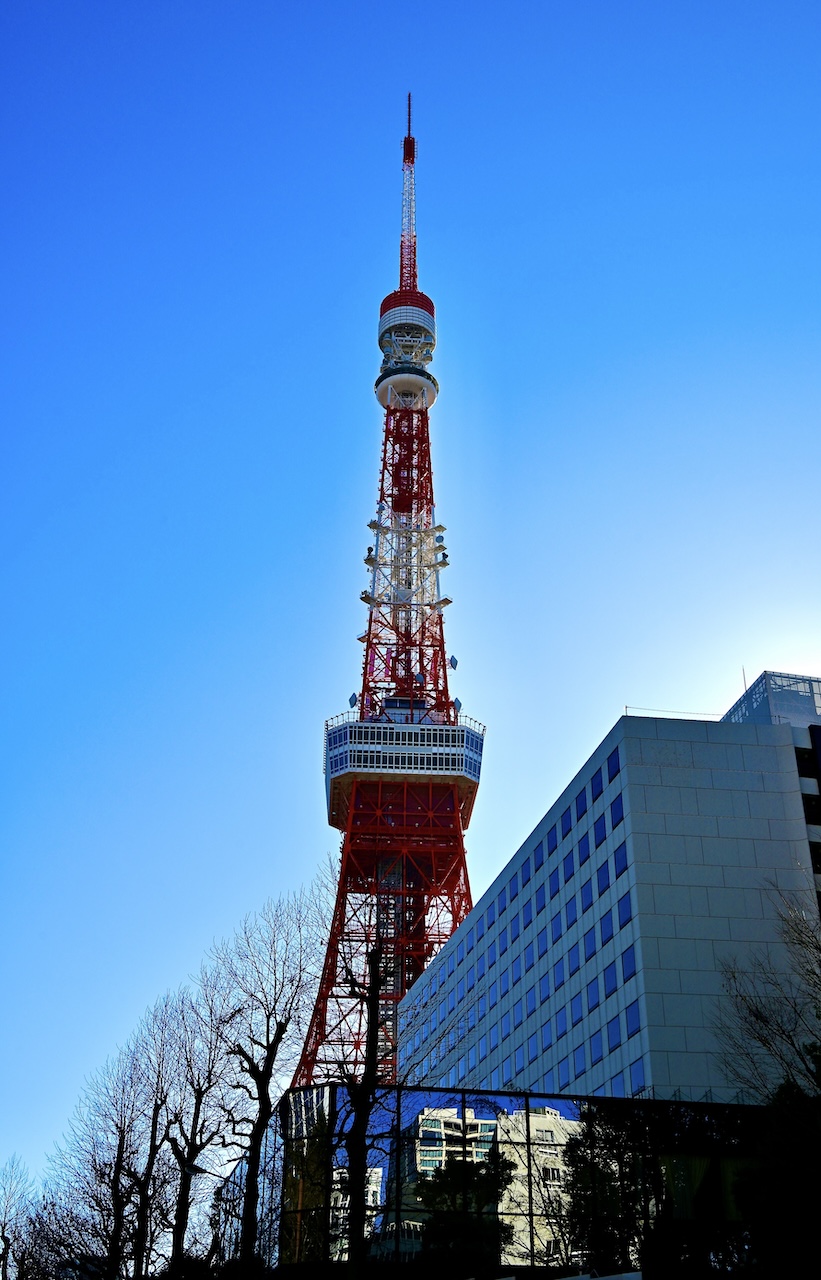


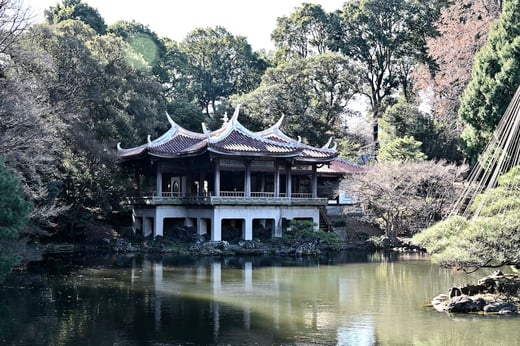
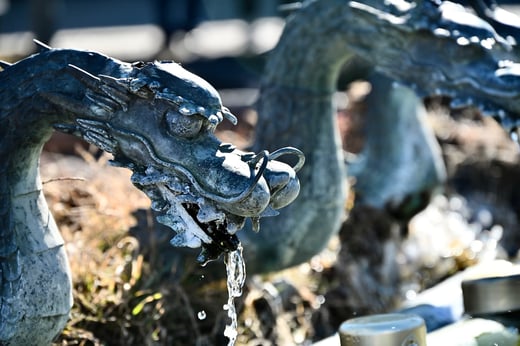
Our 14-Day Japan Itinerary
Alongside our comprehensive Japan Travel Guide, we offer a sample itinerary crafted from our own experiences which we are sharing to help inspire your own travel plans! Feel free to use it as a starting point for crafting your perfect Japanese adventure. We've included highlights, must-visit attractions, and recommendations based on our firsthand experiences to ensure you make the most of your time in this captivating country.
Trip Summary:
-
 14 Nights
14 Nights
-
 7 Cities: Tokyo, Fuji Five Lakes (Lake Kawaguchiko), Kyoto, Nara, Osaka, Himeji, & Yuzawa
7 Cities: Tokyo, Fuji Five Lakes (Lake Kawaguchiko), Kyoto, Nara, Osaka, Himeji, & Yuzawa
-
 Round Trip Flights to Tokyo Narita International Airport (NRT)
Round Trip Flights to Tokyo Narita International Airport (NRT)

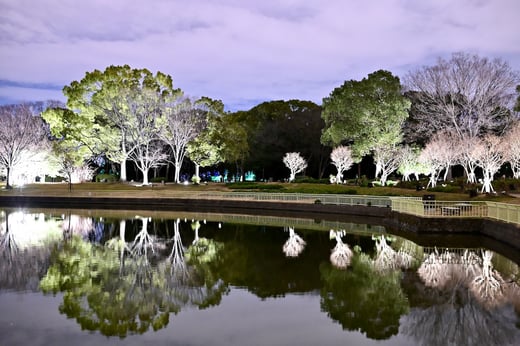
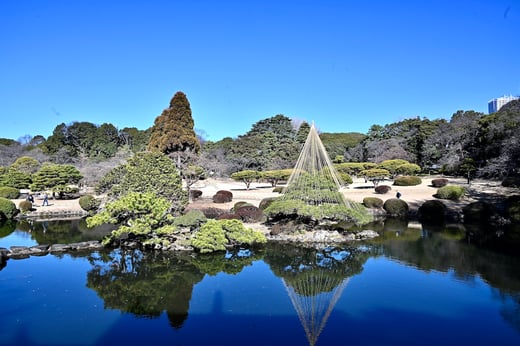
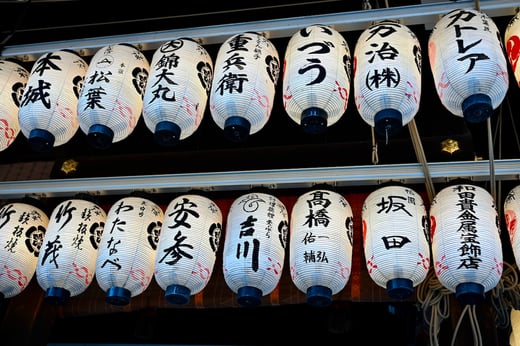

Our thoughts on Japan
We absolutely fell in love with Japan for so many reasons. The country's breathtaking scenery and unique culture set it apart from any other destination we've previously visited. From the serene beauty of traditional Japanese gardens to the neon lights of vibrant cities like Tokyo and Osaka, Japan captivated us at every turn.
We can't forget about the food – wow! It's no exaggeration to say that some of the best food we have ever had was enjoyed in Japan. We relished in the opportunity to try new dishes like okonomiyaki, takoyaki, soba, daifuku, and countless other culinary treats. We packed an entire duffle bag full of so many tasty and unique Japanese snacks and treats to bring home with us because we truly couldn't get enough of the diverse and delicious flavors of Japanese food.
Navigating Japan's extensive public transportation system was a breeze, thanks to its efficiency and accessibility. From subways and buses to the iconic Shinkansen bullet trains, getting around was a seamless experience that allowed us to explore the country with ease and convenience.
Traveling in winter was an added bonus, offering us the opportunity to see Mt. Fuji (on more than one occasion), snowboard in the Japanese Alps, and enjoy fewer crowds than during the peak travel season. Despite spending 14 incredible days immersed in Japan's wonders, we barely scratched the surface of all it has to offer. It was an unforgettable introduction to this captivating country, and we're already dreaming of our next visit. Japan, we'll be back soon!
Japan Travel Guide: Additional Resources for Your Japan Trip
Looking for more Japan content?
Check out the Jetset Seeker Blog!
Our Japan Travel Guides
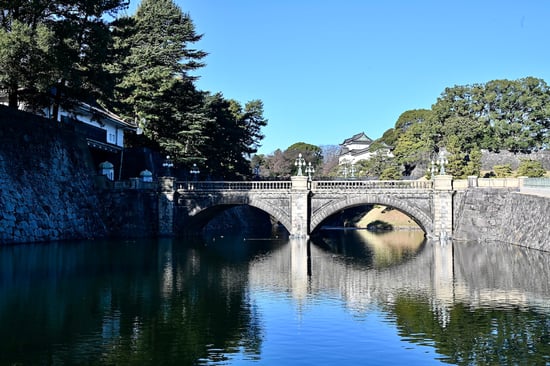
Tokyo
The vibrant capital, renowned for its bustling urban life, cultural treasures, and a fusion of traditional and modern attractions.
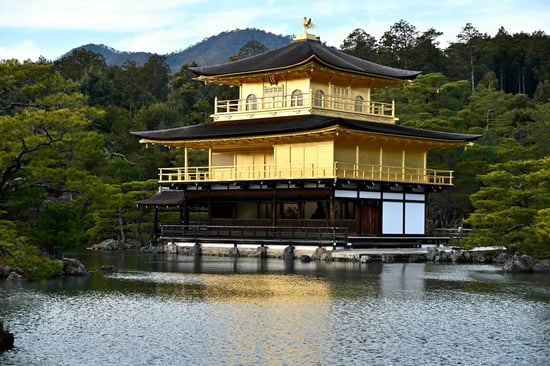
Kyoto
The ultimate destination for Japan's traditional temples and shrines, coupled with gardens, geisha, and an exquisite food scene.

Osaka
Known as Japan's kitchen, a lively city celebrated for its street food scene, landmark Osaka Castle, and vibrant nightlife.
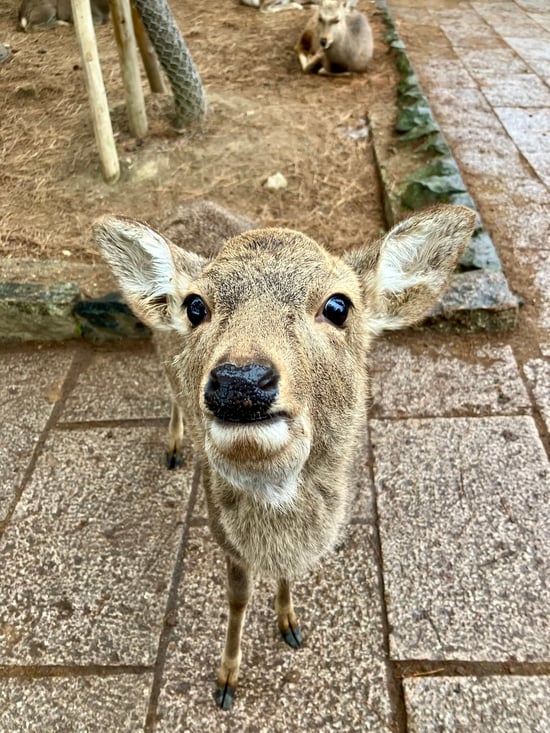
Nara
Steeped in ancient history, famous for its majestic temples, tranquil gardens, and the iconic deer that freely roam its streets.
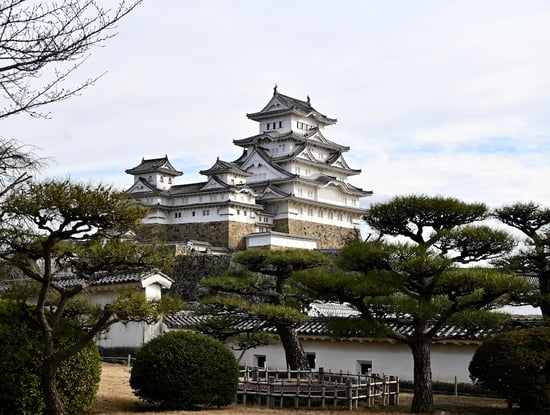
Himeji
Home to the magnificent Himeji Castle, a UNESCO World Heritage site and one of Japan's best preserved feudal castles.
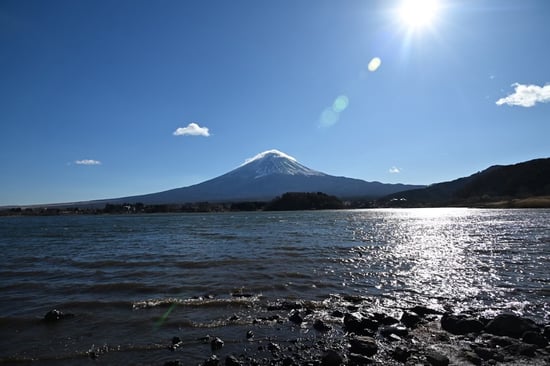
Mt. Fuji & Fuji Five Lakes
Japan's highest peak, dominates the landscape with its majestic beauty, while the Fuji Five Lakes region offers stunning vistas.
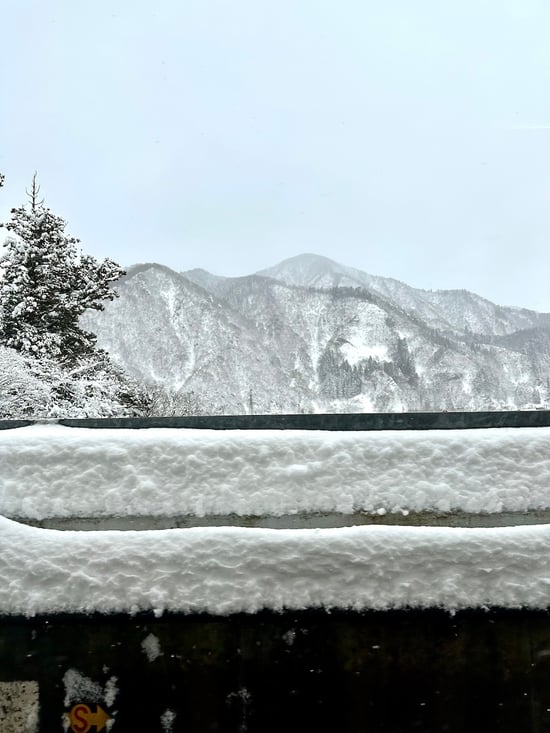
Yuzawa
Nestled in the Japanese Alps and known for its abundant snowfall, Yuzawa is a popular destination for skiing and snowboarding.
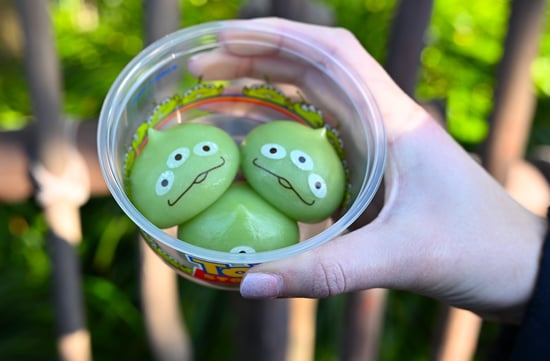
Tokyo Disney Resort
Experience Disney Magic just outside of Tokyo in Urayasu. Featuring two parks: Tokyo Disneyland and Tokyo DisneySea.
%20(1).png?width=3690&height=2079&name=Jetset%20Seeker%20Logo%20(Banner)%20(1).png)

